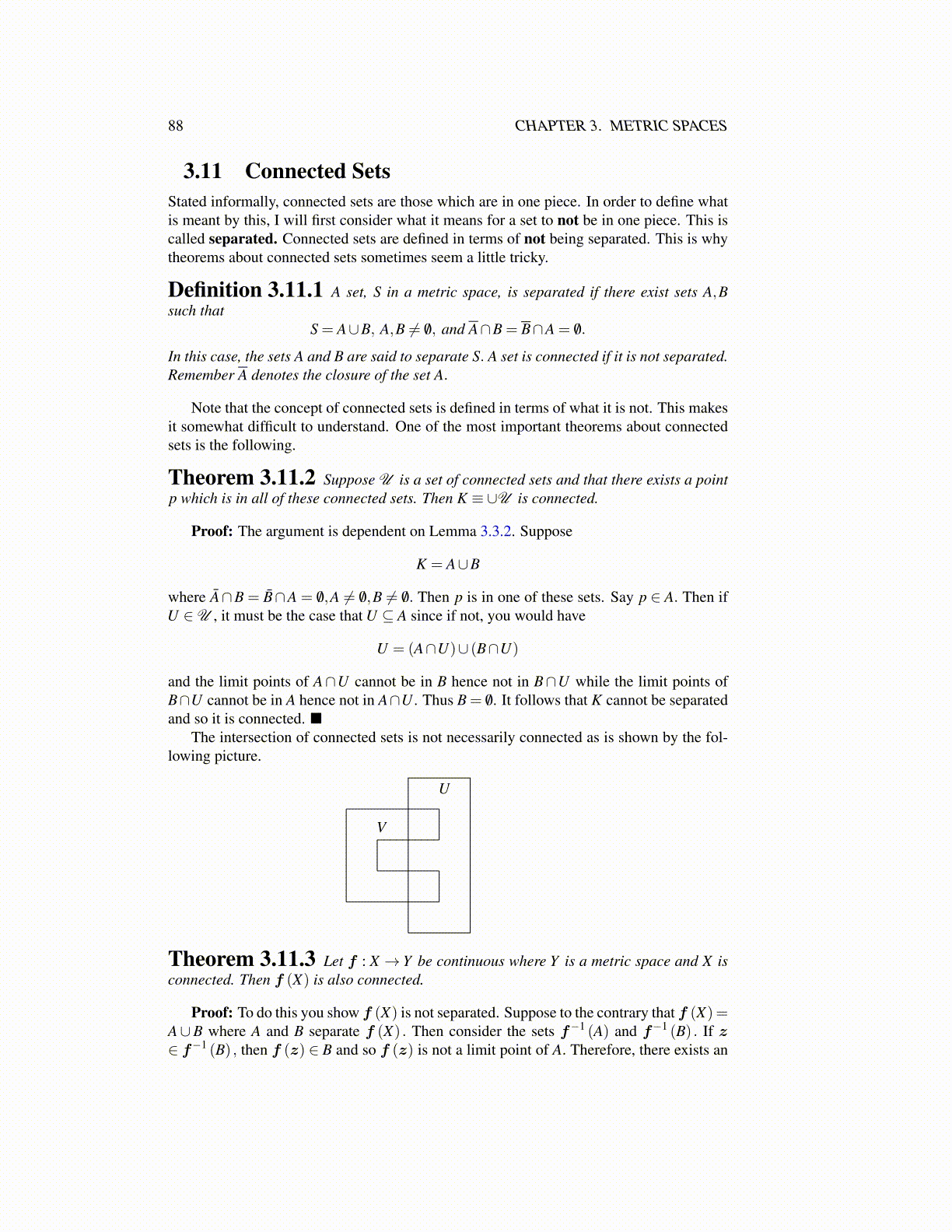
88 CHAPTER 3. METRIC SPACES
3.11 Connected SetsStated informally, connected sets are those which are in one piece. In order to define whatis meant by this, I will first consider what it means for a set to not be in one piece. This iscalled separated. Connected sets are defined in terms of not being separated. This is whytheorems about connected sets sometimes seem a little tricky.
Definition 3.11.1 A set, S in a metric space, is separated if there exist sets A,Bsuch that
S = A∪B, A,B ̸= /0, and A∩B = B∩A = /0.
In this case, the sets A and B are said to separate S. A set is connected if it is not separated.Remember A denotes the closure of the set A.
Note that the concept of connected sets is defined in terms of what it is not. This makesit somewhat difficult to understand. One of the most important theorems about connectedsets is the following.
Theorem 3.11.2 Suppose U is a set of connected sets and that there exists a pointp which is in all of these connected sets. Then K ≡ ∪U is connected.
Proof: The argument is dependent on Lemma 3.3.2. Suppose
K = A∪B
where Ā∩B = B̄∩A = /0,A ̸= /0,B ̸= /0. Then p is in one of these sets. Say p ∈ A. Then ifU ∈U , it must be the case that U ⊆ A since if not, you would have
U = (A∩U)∪ (B∩U)
and the limit points of A∩U cannot be in B hence not in B∩U while the limit points ofB∩U cannot be in A hence not in A∩U . Thus B = /0. It follows that K cannot be separatedand so it is connected. ■
The intersection of connected sets is not necessarily connected as is shown by the fol-lowing picture.
U
V
Theorem 3.11.3 Let f : X → Y be continuous where Y is a metric space and X isconnected. Then f (X) is also connected.
Proof: To do this you show f (X) is not separated. Suppose to the contrary that f (X)=A∪B where A and B separate f (X) . Then consider the sets f−1 (A) and f−1 (B) . If z∈ f−1 (B) , then f (z) ∈ B and so f (z) is not a limit point of A. Therefore, there exists an